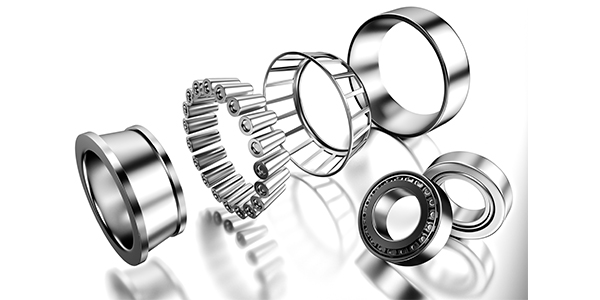
The torque specifications for a wheel bearing are much more exact now than in the past. This not only goes for the axle nut, but the fasteners that hold the hub unit to the suspension and lug nuts. So, what has changed? Simply put, everything has become bigger while at the same time it is getting lighter.
More late-model vehicles have greater braking and cornering capabilities. They are also more efficient, and suspensions are lighter. These changes in construction and capabilities mean that a hub unit not only has to resist greater forces on the flange, but it might be attached to a lightweight aluminum knuckle.
The Physics Of Torque
The basic physics of all threaded fasteners are the same. When a threaded fastener is tightened, it stretches. Since metal is elastic, a clamping load is generated. The friction between the threads, shoulders and even the washers creates additional clamping loads and friction to ensure it does not turn and loosen.
The length, diameter and the pitch of the threads can determine the fastener’s torque specification. In the case of an axle nut, it also determines the geometry of the rolling elements or the preload.
When preload is set, the relationship of the races to the rolling elements is set. The geometry is also known as the “angle of pressure” for the bearing.
The geometry is critical to handling radial (rolling) and axial or lateral loads (cornering). The size and shape of the races and rolling elements control the geometry. If the angle of pressure is not optimal, wear and play can occur.
Too little or too much torque on the axle nut changes the geometry. A variance of 10 ft./lbs. can mean the difference between long bearing life or a failure in a few thousand miles. Guessing the correct torque setting is a bad idea.
Torque Wrench Tech
Chances are you have a torque wrench or two in your toolbox. It probably resides in the plastic case with the warranty certificate. Ask yourself, how much do you trust your torque wrenches?
In a shop setting, your torque wrench could have been borrowed and returned to its case without being wound down to the lowest setting. Not winding down the wrench to the lowest scale before storing it leaves the mainspring compressed. This can weaken the spring and cause false readings. In addition, going to zero or past zero can affect the calibration of the wrench.
Another common problem occurs when the torque wrench is dropped on the ground. Impacts with the shop floor can damage the internal mechanisms of the wrench. While one fall from a workbench may not damage the accuracy, repeated blows can cause a calibration problem.
So, how do you determine if your torque wrench is accurate? Some tool trucks have a torque wrench tester that can help spot a torque wrench that is malfunctioning. You need to test at least several torque settings, including the highest and lowest settings. It is not uncommon to find a wrench that will be accurate at 50 ft./lbs., but significantly inaccurate at 25 or 150 ft./lbs. If the accuracy is off, you should send it out to be calibrated rather than buy another torque wrench. Annual calibration service is recommended by most torque wrench manufacturers.













